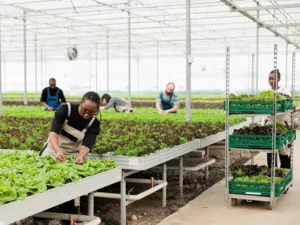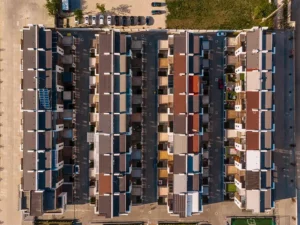Urban Innovation: Creating Sustainable and Livable Cities
As urbanization becomes complex, searching for practical and inhabitable cities has become unavoidable. As a result, the current state of the world asks for intelligent solutions to contemporary urban problems since we live in an era when it experiences greater urbanization at much larger speeds than any other historical period.
This article examines different innovations in urban areas and explores what makes the cities livelier but also greener.
The Urban Challenge:
As population growth and urbanization increase, there is an increment in pressure on resources, infrastructure, and the environment. Urban challenges facing cities include traffic jams, pollution, overcrowding, and poor open space provision.
These problems negatively impact the surrounding environment and the health of urban residents.
Holistic approaches that encompass appropriate technologies, community collaborations, and good environmental practices are required to solve these problems.
Technological Innovations:
Technological transformation is at the core of smart cities’ urban renovation. Smart infrastructure, IoT appliances, and data analysis are critical factors in optimizing resource usage and quality urban service delivery.

For instance, a smart traffic management system helps reduce congestion and travel-associated gasses and ultimately enhances travelling comfort for people on the move.
However, including renewables such as solar panels and wind turbines contributes to a green energy system for the city.
Community-Centric Approaches:
However, sustainability goes beyond developing technological solutions that enhance city living. Community involvement and planning by design offer citizens the opportunity to contribute to their environments.
The initiatives of community nurseries, public art shows, and local clean-up exercises impact beautification and promote a sense of identity among residents within urban areasâthe active involvement of communities in decision-making.
Spaces and Biodiversity:
Accessibility of green spaces is among the pillars of an enjoyable city. # Beyond this, parks, gardens, and urban forests add not just to a city’s aesthetics but also to its inhabitants’ health and welfare.

The inclusion of native vegetation in urban spaces enhances ecological equilibrium and stability. Green roofs and vertical gardens mitigate urban heat islands, promote urban agriculture “and support community gardening projects.
Sustainable Transportation:
Air pollution and traffic jams are widespread in urban areas, with the transport sector taking the lion’s share in urban environmental problems.
Innovation in transport for urban areas tends to focus on more environmentally aware options like mass-transit schemes, dedicated cycling ways, and electric cars. This is because cities worldwide construct bike lanes, pedestrianized areas, and excellent public transport systems to cut down on personal cars.
Promoting electric vehicles, including establishing charging networks, enhances the clean and green approach in the urban transport environment.
Case Studies in Urban Innovation:
Many towns in different parts of the world have developed new city design and planning methods.
An instance of a smart nation is Singapore, where they have introduced the idea of a “smart nation” that involves technological advancement in urban development.
The city-state has employed Smart traffic systems, sustainable energy solutions, and an extensive sensor network for effective waste management, just like Barca is turning into a “SmartCiutat” by incorporating technology in urban design, maximizing service delivery, and improving people’s living standards.
Promoting Livability through Philanthropy:
Urban innovation is driven by philanthropy and non-profit organizations. Such organizations promote resilient and inclusive cities by sponsoring projects and programs emphasizing sustainability and habitabilityâthe private sector partners with government agencies.
Embracing Circular Economies:
The idea of the circular economy becomes integral to building a green city. The concept of a circular economy focuses largely on reducing the amount of waste generated while maximizing the potential of existing resources by encouraging recycling, repurposing, and reusing when possible.

More and more cities follow circular principles in managing waste streams, separating organics and recyclable components. Recycling programs and awareness creation programs for residents promote environment conservation by using proper waste disposal methods among the locals.
Closing the loop in resource consumption makes circular economies sustainable for cities.
Resilience in the Face of Climate Change:
Urban innovation should also tackle the problem of climate change. Adaptive responses entail strategies to respond to rising temperatures, extreme weather occurrences, and sea level increases.
Urban resilient architecture involves green infrastructure, flood-resistant edifices, and environmentally sound water administration techniques. Some cities like Rotterdam in The Netherlands are taking advantage of innovative water plazas and floating pavilions to control rising sea levels.
The idea is that a changing global climate will likely impact city development; thus, cities should be climate resilient.
Affordable and Inclusive Housing:
Affordable housing still presents an important aspect of urban live ability. Many cities face the problem of inadequate space for living and very high costs of buying property, which results in social imbalance and homelessnessâaffordable and inclusive urban innovations in housing.

Micro-housing, co-housing, and mixed-income developments are initiatives geared towards accommodating different social classes of people with varying income levels.
Incorporating smart design components and eco-friendly construction materials also ensures that new urban settlements are friendly to nature and people.
Digital Inclusion and Connectivity:
The city must be digital in the new era that embraces this phenomenon. The towns are giving much consideration to digital inclusion strategies to close the divide and allow every citizen to get data and services.
Connectivity is also enhanced by public Wi-Fi networks, digital literacy programs, and integrating technology in public services. Since the world’s cities increasingly become interconnected, new ways to solve urgent city problems in the framework of inclusive urbanism are opened.
Cultural Preservation and Identity:
It is not enough to rate cities only in terms of their infrastructure and technology. This is because they need an emotional connection, which includes upholding their culture and identity.

Therefore, innovation in an urban is a reflection of cultural heritage that helps people create an image of themselves within the city. Activities like the promotion of local arts, holding heritage festivals or adaptive reuse of old buildings may promote diversity in the case of a town.
Modern cities ought to mix modernity and tradition to have unique and vibrant scenes for urban life that reflect the diversity of nations.
Measuring Success through Well-being Indices:
The definition of a ‘successful city’ depends upon parameters like GDP and job creation rates until recently. However, ‘success’ has to be perceived as more liveable and green cities.
The concept of what constitutes urban success uses well-being indexes such as health, education, social interactions, and environmental issues. Instead of using money measures such as GDP, the cities of Helsinki and Copenhagen use well-being indices.
In order to develop these cities using the residents rather than only their monies, this will be their leading policies and plans utilizing various indices.
Collaborative Governance Models:
There is a need for collaborative efforts between different partners such as government departments, corporations, non-governmental organizations, and the general public who also live in the cities towards making cities sustainable and inhabitable.

Three core components of a collaborative governance model are open communication, co-decision-making, and collective responsibility.
What if cities opt for collaborative planning involving citizens in decision-making?
Therefore, if they work based on the true needs and desires of their citizens, then they will be more successful when it comes to planning projects that will have a direct impact on people’s lives within those cities.
When coordinated through collateral governance, residents start feeling that the city environment belongs to them, and they have no choice but to get involved in the process.
Call to Action for Us:
Sustainable and liveable cities are created through joint efforts and will. It’s important to connect and network with like-minded people who can act as a catalyst to bring all the change discussed earlier.
UPDEED is a free online portal where people connect with other changemakers and grow opportunities so that anyone can contribute to the causes they care about.
It is up to every person to effect constructive changes in their neighbourhood. Join UPDEED to find out what you can do about it and how to become part of this green revolution in urban development.
Ready to make a positive impact in the world? UPDEED is the place for you. Our free and open platform is filled with inspiring stories from individuals and organizations who are making a difference in their communities and beyond. Connect and collaborate with like-minded individuals from around the globe on UPDEED, and discover your own potential to create meaningful change. Join our community and make a difference.Â





